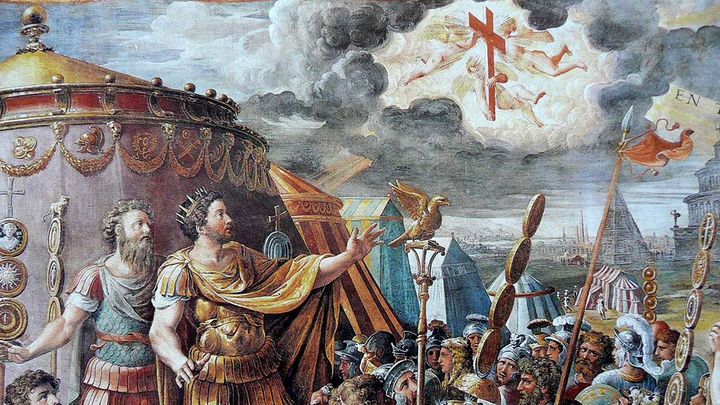Given the religious extremism that inspires terrorism, the world has naturally raised the question: can the core tenets of Islam and its original martial development genuinely be said to be in sync with the ideologies and acts of extremist as they claim?
A host of media-pundits, journalists and even Christian apologists have propagated that it does. Graeme Wood, in his widely read article published in The Atlantic, wrote that ISIS fighters were “authentic throwbacks to the early Muslims, faithfully reproducing their norms of war”. As Muslims, shaken by the extremism that has emerged in our religion and the high profile attacks at its core and origin, we have a deeper stake in answering the question than non-Muslims.
Critics (and extremists) often pluck verses from the Holy Quran and snippets out of hadith-texts (sayings of Prophet Muhammad) that address war, and draw an ahistorical conclusion devoid of context and backdrop feeding the extremist narrative. Yet, historical record and analysis of geopolitics (and identity-politics), conflicts and developments reveals a remarkably alternate picture.
This article is first in a three-piece installment analyzing the vast backdrop of the Roman-Persian conflict in Asia-minor, its implications on identity politics and religious tolerance, and how the the rise of Islam in the 7th century impacted these dynamics.

Ardashir I, the founder of the Persian Sassanid dynasty in the early 2nd century
Persian Supremacy
The genesis of the protracted warfare between two of the greatest empires of antiquity-- Rome and Persia-- that ultimately was put to an end with the rise of the Islamic revolution, was deeply ingrained in religious identity and supremacy— victory belonged to the followers of the true God(s) or religion. The Persian religious identity of antiquity had been Zoroastrianism based on the prophet Zoroaster who lived around 1,000 BC. The rise of the Sassanian dynasty some 1,200 years later in the 2nd century after Christ saw a reassertion of Zoroastrianism to redraw a sense of the great Persian identity and face the challenge of Roman expansion. But this happened at the expense of persecution and intolerance of other religions, particularly the Christian East which had been developing in Asia-minor long before Constantine, Constantinople and Christendom.
Peter Frankopan, Director of Byzantine research at Oxford, writes in his international best seller ‘The Silk Roads’: “After taking power in 224 AD, Ardashir I and his successor (Shahpur I) embarked on a full-scale transformation of the state. It involved the assertion of a strident identity that sought to accentuate links with the great Persian Empire of antiquity. The rise of the new dynasty soon brought about a stiffening of attitudes, and the teachings of Zoroaster were promoted at the expense of other ideas. The expansion of the Persian state was accompanied by a stern enforcement of values and beliefs presented as both traditional and essential for political and military success. Among those singled out for harsh treatment were the Nasraye and Kristyone (Nazarenes and Christians)”— who had been winning converts.

A rendition of Constantine’s vision of the cross before conquest that led to the birth of Christendom
Roman Supremacy
While Persia reasserted its religious identity, Rome was about to execute an even more ambitious state-administered religious assertion that must be one of the most remarkable traditional, cultural and social transformations in history. In 312 AD, Emperor Constantine, embattled in a civil war, saw a vision in the sky of a cross along with the words “by this sign you will conquer” before defeating his rival in battle and subsequently consolidating power. Deeply convinced of the vision he saw, Constantine embarked on a zealous Christianization of the Roman Empire building a grand new city and center of the Roman Empire dedicated to Christianity named after himself—Constantinople, located eastward from Rome and interfacing directly into the Persian Empire.
This grand build-up of what came to be known as Christendom unfortunately came with a suppression of other religions and ideas-- even Roman traditions and even Christians who didn’t conform to Roman-Christian theology (The Nicaean Creed). Peter Frankopan writes that authors from the time speak of the new city of Constantinople being cleansed of altars, Grecian temples and pagan sacrifices...the Emperor himself shut down cult centers, oracles and divinations—staple features of Roman theology of antiquity. The long-standing entertainment spectacle of gladiator fights-to-the-death were abolished as a Christian revulsion that devalued the sanctity of human life.
Constantine then proclaimed himself as the protector of Christians everywhere. In a letter to Persian King Shahpur II he writes, “I commend these persons (Christians) to you for protection, for by this proof of faith you will secure an immeasurable benefit to yourself and us”. The words were apparently taken as a threat, especially with Roman frontier posturing and incursions into Persian territory. Then, the ruler of the Caucasian kingdom of Georgia became Christian with a Constantine-like epiphany episode and Persian anxiety turned into panic-- Shahpur sent armies into the caucuses deposing local rulers and installing loyalists. Constantine responded by assembling an enormous army, ordering bishops to accompany expeditions and announced that he wished to undertake a punitive attack on Persia and be baptized in the River Jordan. However, soon after he fell ill and died.
Persian ruler Shahpur II proceeded to unleash hell on local Christians as reprisal for Constantine’s aggression, egged on by Zoroastrian clergy. Per Peter Frankopan: one manuscript from Edessa at the start of the 5th century records the execution of sixteen bishops and fifty priests in this period. Christians were now regarded as an advance guard, a fifth column that would open Persia to the Roman Empire.
This war of religious posturing, aggression and supremacy between the two super powers began roughly 200 years before the rise of Islam in the 7th century AD when it would reach its climax and conclusion.
Read the next part here.
